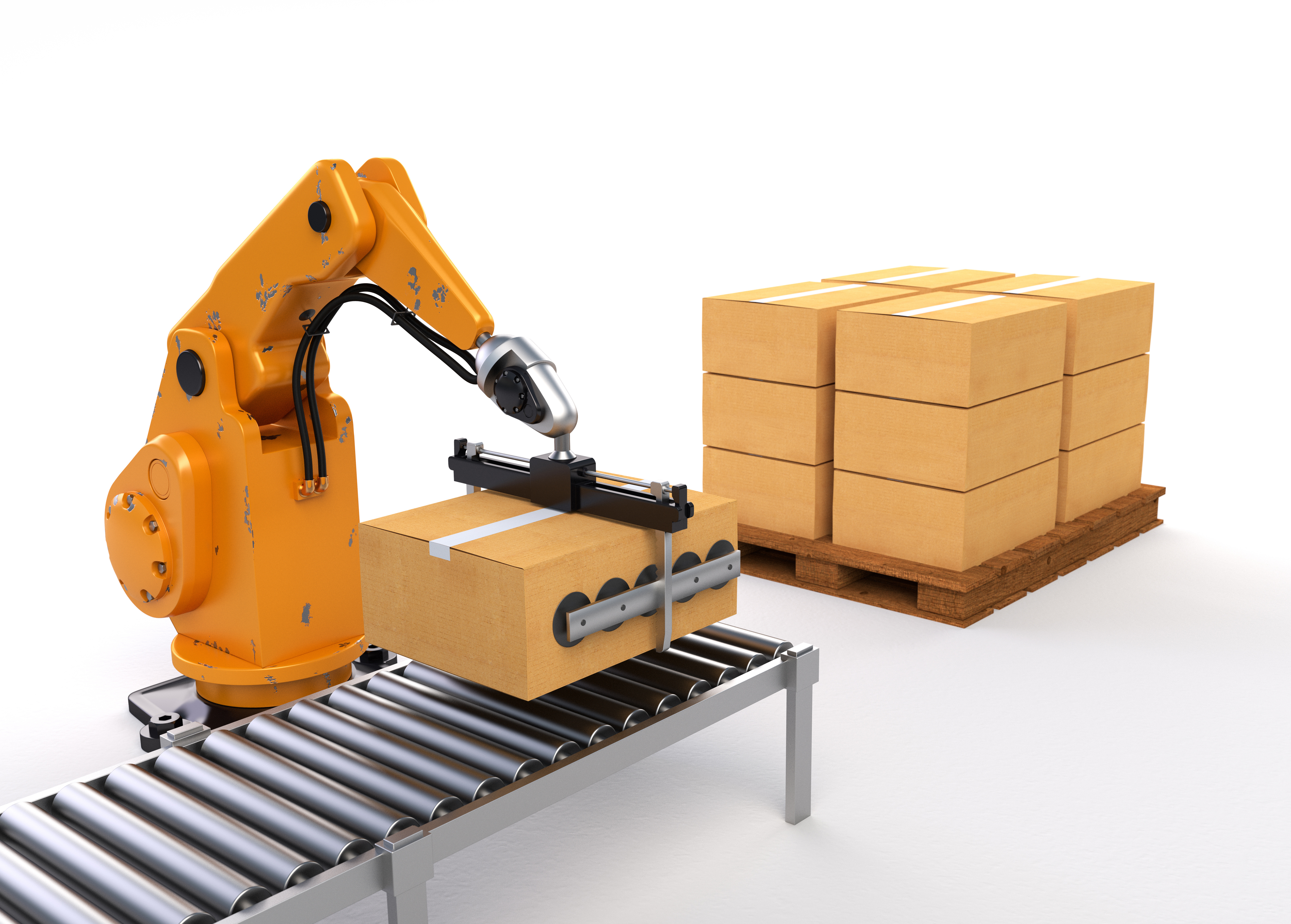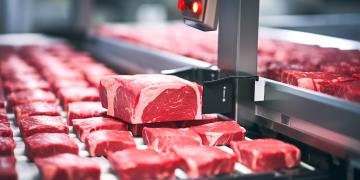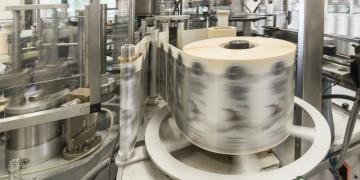Step 1: Palletizing
Palletizing is the procedure of stacking products on a pallet. Manual palletizing is strenuous for the workers, time consuming and therefore expensive. Robot palletizers (although the systems have high initial cost) are much more time efficient and can therefore save you money in the long run.
There are four main types of palletizing:
- Layer palletizing is the usual way of placing finished goods on the pallet one by one until one layer is finished and then repeating the process. If the product is lightweight (less than 15 kgs), a cobot can be used. In any other case, a heavy-duty robot is a better fit.
- In full layer palletizing, the robot picks up a whole layer of goods and places them directly onto the pallet, thus saving time. Since the gripper for such an application is big and heavy, heavy-duty robots are typically applied here.
- Mixed case palletizing is the process of stacking a pallet using different product types. In this case, a six joint robot would add flexibility as a mixture of goods might result in the need to turn them to fit better on each layer.
- Inline palletizing takes part during the production line, using "smart" conveyor belts to split the products in different directions and thus fill a layer. Then each layer is pushed down to a pallet using an elevator mechanism. There is no need for external robots in this application.
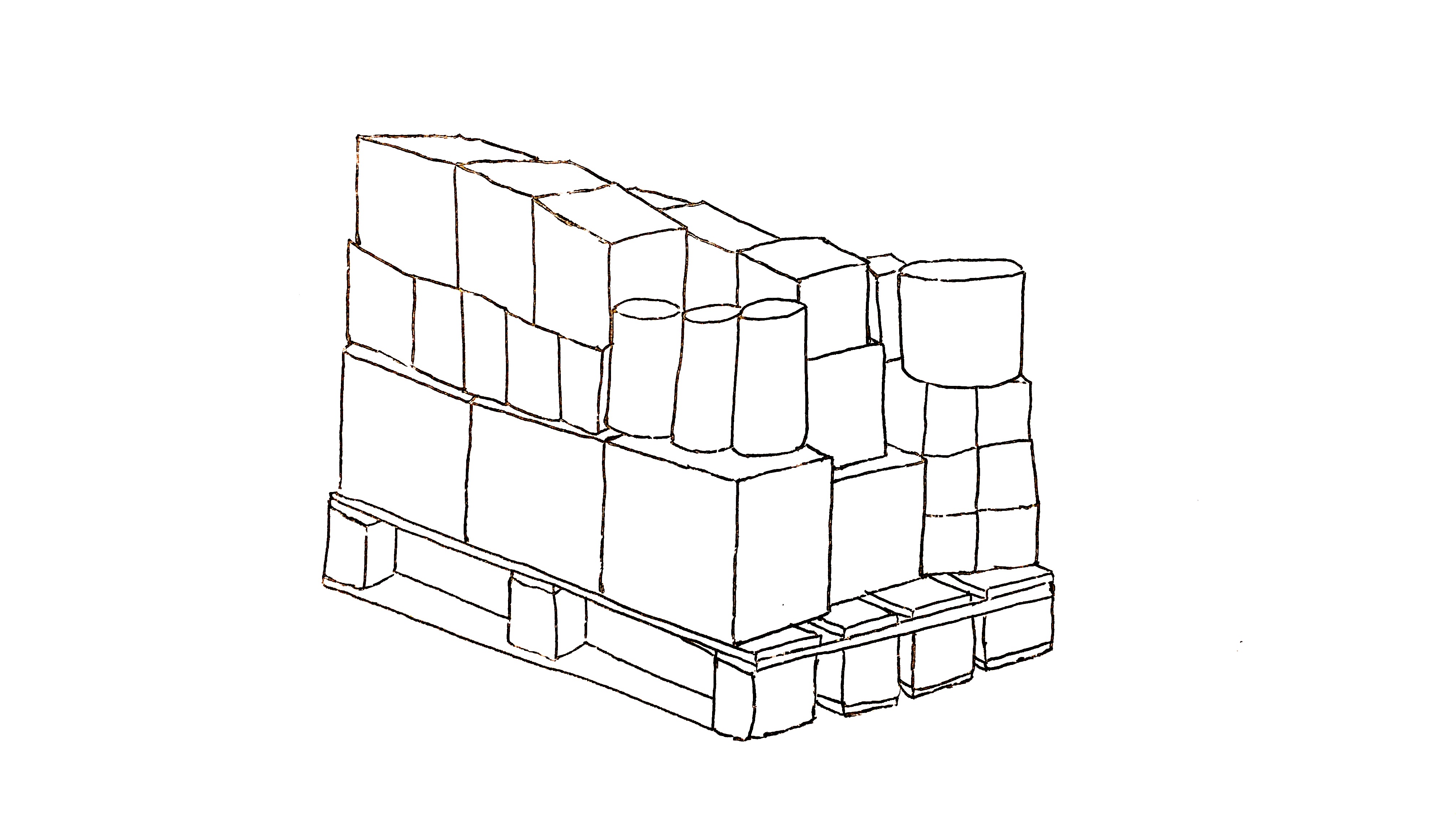
The right solution depends on your product type
When looking for a palletizing system, consider your product type. Inline palletizing would be very useful for products packaged in heavy bags, avoiding the heavy lifting by a robot or an employee. Full layer palletizing is a better fit for boxes due to their standard shape. Layer palletizing is more applicable towards crates of bottles which are fragile so it would be wise to move them one at a time.
There are things to note about grippers too. A magnetic gripper or a vacuum gripper with suction cups is efficient for picking up solid/flat items like carton boxes from the top. Bag grippers can lift bags from the bottom with hooks on each side. Custom grippers are also applicable.
Step 2: Automated wrapping
Pallet wrapping is the process of putting foil (stretch wrap/film) around a pallet to secure it and immobilize its contents. Automating this process can increase both safety and efficiency in the factory.
One solution apart from manual wrapping is by use of a mobile robot, also called "robotic stretch wrapper". It is a specific type of mobile robot with a stretch film attached on its back. It is programmed to attach the film tail to the load and then rotate around the pallet.
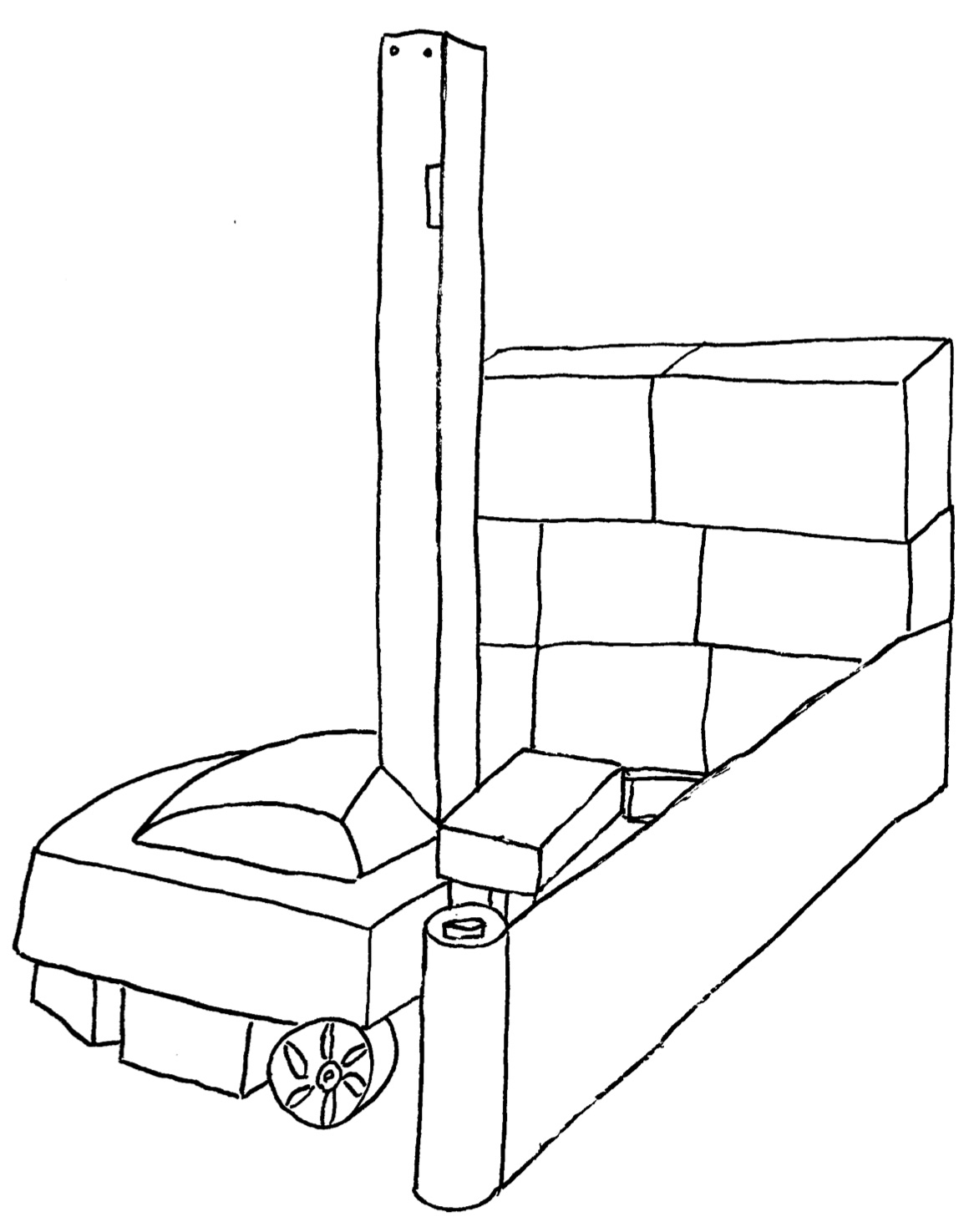
Rotary tower stretch wrapper systems constitute a more common and elegant solution as they can handle loads that are heavy (big bags of rice), light, or fragile (bottles). Due to their stationary design, their movement is more stable than a mobile robot’s movement.
Again, a stretch film is attached on one side of the tower (more like a beam) which is rotating around the pallet. Turntable pallet wrappers slightly deviate from the process as they rotate the pallet around the wrapper, by use of a turning platform on which the pallet is placed.
When time is of the essence, stretch hood wrappers can be used. Instead of wrapping around the pallet, a large mechanism (situated at the end of the production line) swiftly places a plastic hood on top of the pallet by moving downwards.
Manual wrapping is less efficient - and potentially more unsafe
Wrapping by hand is not practical as it is difficult and physically demanding to manually wrap film all the way down in a repetitive cycle. Wrapping all the way down is also not considered safe, as the forklift might puncture the film and the load could loosen up.
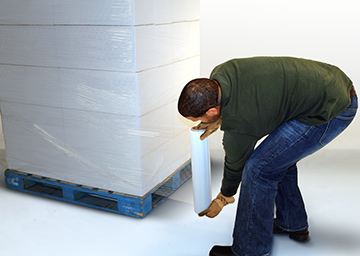
On the contrary, stretch wrappers are able to completely immobilize the load by use of a tight cable on the top layer of the pallet. Consequently, there is no need to wrap all the way down and the forklift can pick up the pallet without puncturing the film.
Last but not least, a human cannot stretch the film as tightly as a machine. By stretching the film further, you end up wrapping a bigger area while consuming less film. In general, rotary towers are reasonably priced and well tested. Mobile robots are flexible while stretch hood offers fast wrapping in high capacity.
Step 3: Automated labelling
Pallet labelling is the process of sticking labels on boxes already stacked up on the pallet. Automating this process is the last obvious step, but some challenges might arise during during the process.
One of them is the robot applying excessive force on the pallet, thus damaging the products. A solution to that is placing a force sensor (on the robot’s end effector) which gives feedback of the measured force, therefore readjusting the force and position of the robot.
Another problem could be that the label is applied in the wrong position or not applied at all. That can be solved with a vision system that checks whether the label is correctly applied. A vision system is also important in case the label includes a barcode that needs to be scanned.
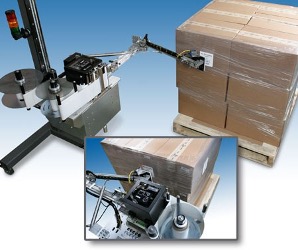
Nevertheless, if the product is not packaged in boxes but bottle crates or bags and labelling is performed individually, then it should take place during the production line. In this case, a delta robot is a proper solution as it is fast enough to handle a high number of goods at the same time.
It is hard to label products with a complex design such as bottles/bottle crates. Labelling is performed more easily on flat surfaces of standard shapes like boxes so manufacturers should take that into consideration when they choose a packaging solution.
Conclusion
Palletizing, wrapping and labelling are three major processes that cannot be avoided. They can be performed manually, but in many cases robotic solutions can greatly boost their efficiency. Many companies give priority to automating palletizing first and then the rest. This transition can be done separately or as a single purchase of a combined solution. Therefore, it is essential to pick the right solution tailored to your needs in order to reduce cost while raising productivity and flexibility in your factory.

